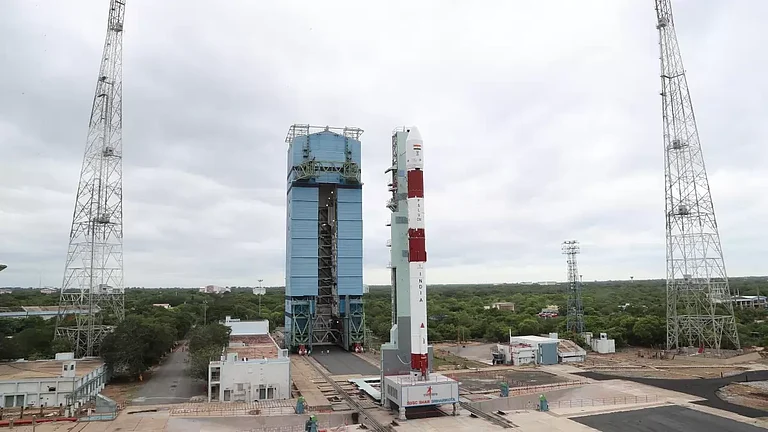
GSLV Mk III launched at 14:15 IST from Sriharikota; successfully injected 4,700 kg GSAT-20 into GTO in 16 minutes.
GSAT-20 is India’s heaviest communication satellite to date; features Ka-band payload for enhanced broadband and disaster support services.
10th flight of GSLV Mk III; demonstrates full indigenous capability to orbit multi-tonne geostationary satellites.
The Indian Space Research Organisation (ISRO) successfully launched the GSAT-20 communication satellite using the Geosynchronous Satellite Launch Vehicle Mk III (GSLV Mk III) from the Second Launch Pad at Satish Dhawan Space Centre. The liftoff occurred at 14:15 IST, with the vehicle accurately injecting the 4,700 kg satellite into a Geosynchronous Transfer Orbit (GTO) approximately 16 minutes later.
The GSLV Mk III, equipped with a cryogenic upper stage, completed all four stage separations and engine burns as planned. This marks the 10th mission of the launch vehicle and the first dedicated deployment of a satellite exceeding 4 tonnes using indigenous technology. GSAT-20, built at ISRO’s Satellite Centre in Bengaluru, carries Ka-band high-throughput transponders to provide broadband connectivity, with priority coverage over the Andaman and Nicobar Islands and other remote regions.
Post-separation, the Master Control Facility in Hassan acquired the satellite’s telemetry, confirming nominal performance. The spacecraft will now perform orbit-raising maneuvers over the next two weeks to reach its final geostationary slot at 83° East.


























